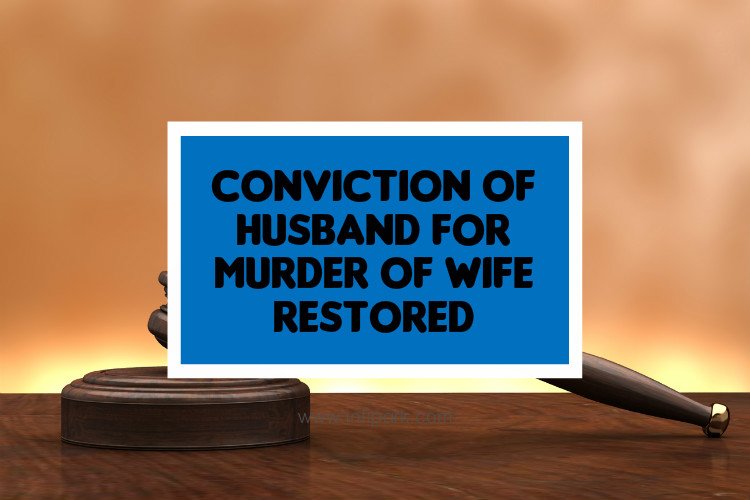PROSECUTION STORY IN BRIEF IS THAT PACHIMALA GANGA, daughter of Jithuka Nagooru (PW1) and Jithuka Veeramma (PW2) got married to the accused/respondent. Their marriage was solemnized some two years before the date of incident. After marriage deceased Pachimala Ganga joined company of her husband at Cheyyeru Agraharam, and stated living with him. After some time the accused came to know that he was suffering from venereal disease. He suspected that he might have contacted it through his wife. This started souring of relations between the two. According to the prosecution, the accused thereafter started ill-treating his wife, on which she left him and went to her parents’ house. Sarojini, sister of the accused, went to the house of the parents of the deceased and promised that the deceased would not be subjected to ill-treatment. On this personation deceased went again to Cheyyeru Agraharam, i.e. village of her husband, but she was again allegedly subjected to harassment. As such, prior to ten days before her death PW-1 and PW-2 (parents of the deceased) took her back to their house.
On 5.8.2001 at 6.00 p.m. the accused himself went to the house of his in-laws (PW1 and PW2) and took his wife on the pretext that they were going to watch night show of movie ‘Eduruleni Manishi’ in Devi Ganesh theatre in neighbouring Muketeswaram village. According to prosecution, the couple went to the movie but the accused had a plan to kill her. After midnight while returning home, the accused took his wife towards coconut tope (grove of PW-8 Ponakala Satyanarayana Murthy) and murdered his wife by strangulating her. Thereafter, the accused left the place and absconded. PW 1 and PW2, when their daughter did not return, started searching for her. On 6.8.2001 in the morning her dead body was found in the coconut tope. PW7 Yalla Satyanarayana noticed the dead body and told about the same to PW1 and PW2.
PW 1 Jithuka Nagooru, father of the deceased, gave First Information Report on 6.8.2001 at 8.00 a.m., to the police on which crime No. 50 of 2001 was registered. PW-15 Inspector A. Subbarao investigated the crime. PW-9 Relangi Sri Veera Venkata Satyanarayana, on instructions of the Investigating Officer, prepared inquest report (ex. P-3) after the dead body was taken into possession. PW-12 Dr. A. Subbarao conducted post mortem examination on the dead body of the deceased and prepared autopsy report (Ex. P-22). After recording the ante mortem injuries, the Medical Officer opined that the deceased had died due to asphyxia caused by strangulation with ligature. On 9.8.2001 the accused/respondent was arrested by the Investigating Officer near Karnakadurga Temple. After interrogating witnesses and on completion of investigation a charge sheet was filed by the Investigating Officer against accused Patchimala Vigneswarudu @ Vigganna @ Ganapathi for his trial in respect of offence punishable under Section 302 IPC.
The trial court, after considering the evidence on record, found the accused guilty of charge of offence punishable under Section 302 IPC and convicted and sentenced him to imprisonment for life and directed to pay fine of Rs. 200/- in default of payment of which the accused was directed to further undergo simple imprisonment for a period of one month. Against said order dated 18.9.2002, passed by II Additional Sessions Judge, Rajahmundry, criminal appeal was filed by the convict before the High Court, and after hearing the parties, the High Court allowed the appeal and acquitted the accused/respondent of the charge on the ground that chain of circumstances is not complete leading to a definite conclusion that the accused alone was responsible for commission of offence.
Against the judgement of the High Court State preferred special leave petition. The Supreme Court accepted the appeal, set aside the judgement of the High Court. Order of conviction and sentence was restored.
The operative part of the judgement read as under :
Succinctly stated, following circumstances are found to have been proved on record:
1) Admittedly, the deceased was wife of the accused and they had strained relations.
2) The accused was suffering from venereal disease which he suspected to have sexually transmitted through his wife.
3) On 5.8.2001 the accused had gone to his in-laws’ house and took his wife with him.
4) The deceased and the accused were last seen in the mid night (intervening night of 5.8.2001 and 6.8.2001) going together from cinema hall after night show, towards village Ayinavilli.
5) The accused was last seen returning alone from villageAyinavilli, after midnight at about 12.30 a.m., i.e. 0030 hrs. on 6.8.2001.
6) The dead body of the deceased was recovered next morning on 6.8.2001 from village Ayinavilli.
7) The deceased had died homicidal death and cause of her death was asphyxia due to strangulation. viii) It is also established that the accused absconded from the village after the incident.
In our opinion. above chain of circumstances is complete and leads only to the conclusion that it was the accused/respondent and he alone, who committed murder of the deceased. The view taken by the High Court that the chain of circumstances is not complete merely for the reason that drunkenness of the accused is not established, and that the accused cannot be said to have got sexually transmitted disease through his wife, is the view based on irrelevant considerations and could not have been taken in the present case after reappreciating the evidence on record. It is proved on the record by PW-11 Dr. Venkata Reddy that the accused was suffering from balanoposthitis, and PW-1 Jithuka Nagooru and PW-2 Jithuka Veerarnma have proved the fact that the accused suspected that it might have been transmitted to him through his wife. What is more important is that in his statement under Section 313 of Code of Criminal Procedure, when above evidence was put to the accused, he has accepted said fact. What he denied is that he did not go to take his wife to her parents’ house. He further denied that he did not take her to night show of any movie, nor committed her murder. In the above circumstances, we are of the opinion that in the present case only view possible was the one taken by the trial court: As such, it is a lit case where order of acquittal recorded by the High Court requires interference. Therefore, on the basis of the discussion on evidence, as above, we are of the view that this appeal deserves to be allowed.
Reference : Supreme Court. State of A.P. v. Patchimala Vigneswarudu A Vigganna @ Ganapathi, criminal appeal no. 436 of 2008.











